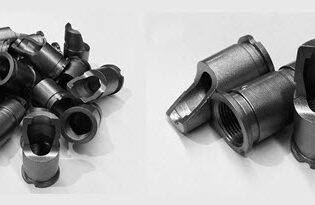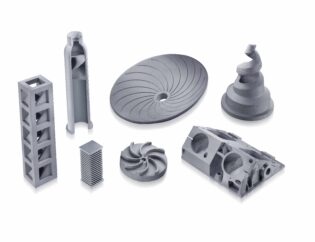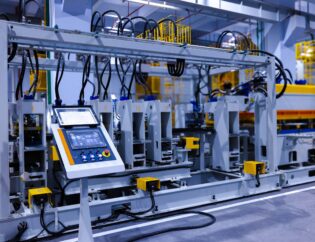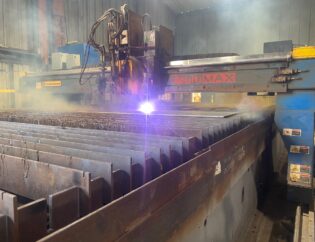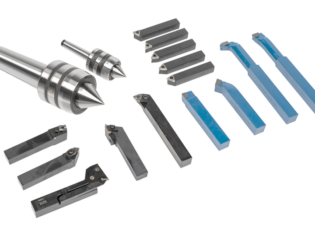In the world of CNC machining, tolerances play a crucial role in ensuring precision and quality in manufactured parts. Understanding CNC tolerances is essential for engineers, machinists, and designers alike, as it directly impacts the functionality and performance of components. This guide will delve into the intricacies of CNC tolerances, providing insights into their significance and application in various industries.
Readers can expect to learn about the different types of tolerances, including dimensional, geometric, and surface finish tolerances. We will explore how these tolerances are specified, measured, and maintained throughout the machining process. Additionally, the guide will cover best practices for achieving optimal tolerances and the common challenges faced in CNC machining.
By the end of this guide, you will have a comprehensive understanding of CNC tolerances and their implications for manufacturing. Whether you are a seasoned professional or new to the field, this resource will equip you with the knowledge needed to enhance your machining projects and ensure high-quality outcomes.
Guide to CNC Machining Tolerances
Computer Numerical Control (popularly known as CNC) machining refers to the use of computer programming and electromechanical devices to automate metal parts (and nonmetals) machining as needed. A CNC machine carries out all the operations on the workpiece based on the program to give us the final product.
Understanding CNC Machining Tolerances
CNC machining tolerances are critical for ensuring precision and quality in manufactured parts. Tolerances define the allowable variations in dimensions, which are essential for the functionality and assembly of components. Understanding these tolerances helps manufacturers optimize production processes and maintain high standards of quality.
Technical Features of CNC Machining Tolerances
| Feature | Description |
|---|---|
| Precision | CNC machining can achieve tolerances as tight as ±0.001 inches in specialized applications. |
| Material Impact | Different materials have varying machinability, affecting achievable tolerances. |
| Surface Finish | Tolerances also influence the surface finish, which can be critical for aesthetic and functional purposes. |
| Inspection Methods | Advanced measurement techniques, such as CMMs, are used to ensure parts meet specified tolerances. |
| Cost Implications | Tighter tolerances generally increase production costs and time due to the need for specialized tools and processes. |
Types of CNC Machining Tolerances
CNC machining tolerances can be categorized into several types, each serving different purposes in manufacturing. Below is a comparison of the different types of tolerances:
| Type | Description |
|---|---|
| Unilateral Tolerance | Allows variation in one direction only, either positive or negative. |
| Bilateral Tolerance | Permits variation in both directions, expressed as ± values. |
| Limit Tolerance | Specifies upper and lower limits without using ± symbols. |
| Profile Tolerance | Relates to the curvature of the cross-section of a part. |
| Orientation Tolerance | Measures the variation of a form in relation to a reference form (datum). |
| Location Tolerance | Refers to the shift in the location of features on a workpiece. |
| Form Tolerance | Pertains to the physical features of a workpiece, such as flatness or roundness. |
| Runout Tolerance | Measures the fluctuation of a feature when the part is rotated around a central axis. |
Importance of CNC Machining Tolerances
CNC machining tolerances are vital for ensuring that parts fit together correctly and function as intended. For instance, in the automotive industry, tolerances are crucial for engine components, where even minor deviations can lead to performance issues. Similarly, in the aerospace sector, tolerances must be extremely tight to ensure safety and reliability.
Factors Affecting CNC Machining Tolerances
Several factors influence the achievable tolerances in CNC machining:
- Material Properties: Harder materials like titanium and stainless steel are more challenging to machine with precision compared to softer materials like aluminum.
- Machining Process: Different CNC processes (milling, turning, etc.) have varying capabilities regarding tolerances.
- Machine Calibration: Regular calibration of CNC machines is essential to maintain accuracy and precision.
- Environmental Conditions: Temperature and humidity can affect material properties and machining accuracy.
Best Practices for Achieving Optimal Tolerances
To achieve optimal tolerances in CNC machining, manufacturers should consider the following best practices:
– Select Appropriate Materials: Choose materials that are compatible with the desired tolerances and machining processes.
– Utilize High-Precision Tools: Invest in quality cutting tools to enhance machining accuracy.
– Regularly Inspect Parts: Implement consistent monitoring and inspection methods to catch deviations early.
– Train Operators: Ensure that machine operators are well-trained in best practices and the capabilities of the equipment.
Conclusion
Understanding CNC machining tolerances is essential for manufacturers aiming to produce high-quality components. By selecting the right materials, processes, and tolerances, companies can optimize their production while ensuring that parts meet functional and aesthetic requirements. Whether in automotive, aerospace, or electronics, the importance of precise tolerances cannot be overstated.
FAQs
1. What are the standard tolerances for CNC machining?
Standard tolerances for CNC machining typically range from ±0.005 inches to ±0.030 inches, depending on the process and material used.
2. How do material properties affect CNC machining tolerances?
Material properties, such as hardness and machinability, significantly impact the achievable tolerances. Softer materials allow for tighter tolerances, while harder materials may require more specialized techniques.
3. What is the difference between unilateral and bilateral tolerances?
Unilateral tolerances allow variation in one direction only, while bilateral tolerances permit variation in both directions, expressed as ± values.
4. Why is regular inspection important in CNC machining?
Regular inspection helps ensure that parts meet specified tolerances, allowing for early detection of deviations and maintaining quality control.
5. How can I achieve tighter tolerances in my CNC machining projects?
To achieve tighter tolerances, select appropriate materials, use high-precision tools, and ensure proper machine calibration and operator training.

